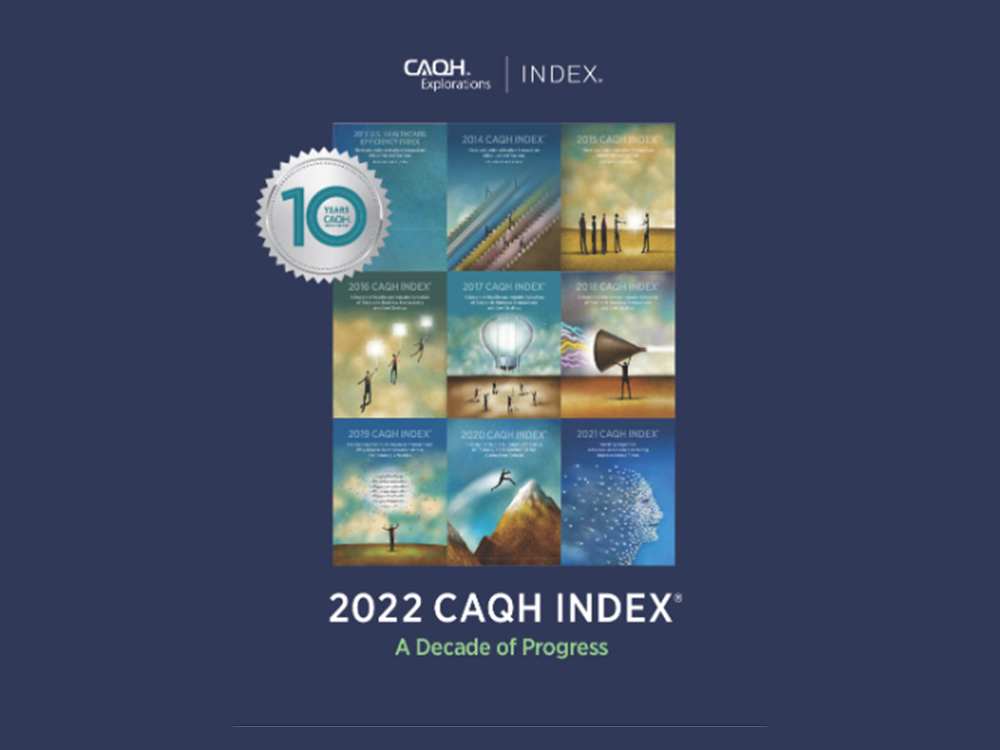2022 CAQH Index: Health plans and providers can save nearly $25 billion annually by automating administrative transactions

By: Admin
CAQH today released its tenth annual Index report measuring the progress healthcare payers and providers have made automating electronic business processes. This year’s report found that, while automated workflows implemented during COVID-19 increased efficiency, staffing challenges and greater healthcare utilization contributed to overall higher year-over-year administrative spending.
“Over the past 10 years, despite a rapidly changing healthcare landscape, payers and providers have made dramatic gains automating transactions and reducing the cost of business processes,” said April Todd, CAQH Chief Policy and Research Officer. “Our latest report shows that this trend toward greater efficiency continued last year, even though post-pandemic factors increased total spending.”
For the past 10 years, the CAQH Index has tracked automation, spending and savings opportunities for administrative transactions related to verifying insurance coverage and cost sharing, obtaining authorization for care, submitting claims and supplemental information, and sending and receiving payments.
The latest report found the United States healthcare system spent $60 billion conducting nine common administrative transactions–an increase of roughly $18 billion over the previous year. Of the $60 billion annual spend, the industry can save nearly $25 billion, or 41 percent, by transitioning to fully electronic transactions. This would be in addition to the $187 billion that health plans and providers are saving annually today due to previous automation efforts.
The increase in spending was driven by at least two factors: higher utilization as people obtained medical care that they deferred during the pandemic; and higher staffing costs as medical facilities paid more to attract and retain workers and were forced to hire inexperienced, less efficient staff to fill vacancies.
Among the other findings in the 2022 Index:
- Adoption of electronic processes increased, on average, by 5 percentage points across the medical and dental industries.
- Of the transactions studied, automation is highest among acknowledgements and claims submissions for both industries. Attachments (24%) has the lowest electronic adoption for the medical industry, while claim payments (17%) has the lowest electronic adoption in the dental industry.
- The volume of transactions increased 28% in the medical industry and 9% in the dental industry.
- During the second year of the pandemic, spending on administrative transactions increased by more than 17 billion in the medical industry and 1 billion in the dental industry compared to the first year of the pandemic.
- The opportunity for savings from further automation increased to $22.3 billion for the medical industry and remained stable at $2.6 billion for the dental industry.
“During an exceptionally challenging time in healthcare, these results are encouraging,” continued Todd. “Healthcare business processes continue to become more automated and efficient, the opportunity for continued progress is great and the areas where further investment is needed are clear.”
To read the full 2022 CAQH Index, click here.
Check out the official Press Release.
About CAQH
For more than 20 years, CAQH has helped more than 1,000 health plans, 2.5 million providers, government entities and vendors connect, exchange information and operate more efficiently. CAQH technology-enabled solutions and its Committee on Operating Rules for Information Exchange (CORE) bring the healthcare industry together to make sharing business information more automated, predictable and consistent. CAQH Explorations researches opportunities to reduce the burden of manual processes in healthcare administration. Visit www.caqh.org and follow us on Twitter: @caqh.
